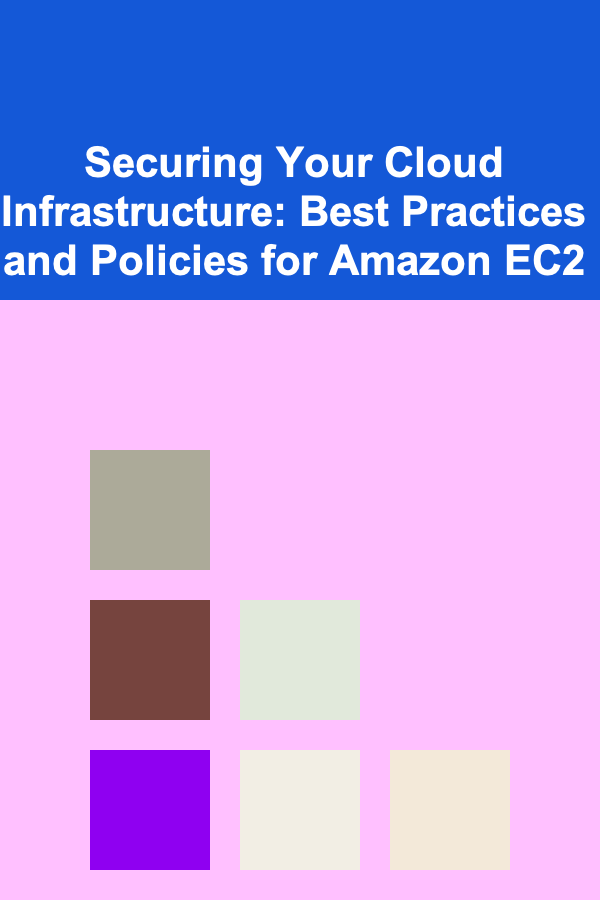
How to Keep Your Office Clean and Tidy with Minimal Effort
ebook include PDF & Audio bundle (Micro Guide)
$12.99$9.99
Limited Time Offer! Order within the next:

Maintaining a clean and tidy office is essential for productivity, professionalism, and overall well-being. However, the thought of keeping your workspace organized can sometimes feel overwhelming. Fortunately, there are effective strategies you can implement that require minimal effort but yield maximum results. This comprehensive guide will detail practical tips and methods to help you maintain an orderly office environment without a significant time investment.
Understanding the Importance of a Clean Office
1. Enhancing Productivity
A clutter-free workspace allows you to focus on tasks without distractions. Studies suggest that a clean environment boosts concentration and efficiency, enabling you to complete work more effectively.
2. Promoting Professionalism
A tidy office reflects professionalism to clients and colleagues. It establishes a positive first impression, suggesting that you take your work seriously and value the environment in which you operate.
3. Supporting Well-Being
A clean office contributes to better mental health. Clutter can lead to feelings of overwhelm and stress, while an organized space fosters calmness and clarity.
4. Encouraging Collaboration
When common areas are clean and organized, it encourages teamwork and collaboration. Employees are more likely to engage in open discussions when they feel comfortable in their environment.
Recognizing these benefits emphasizes the need for consistent cleaning practices within the office.
Assessing Your Workspace
Before implementing cleaning strategies, evaluate your current workspace:
1. Identify Clutter Hotspots
Spend some time observing your office to identify areas that tend to accumulate clutter. This could include desks, common areas, or storage spaces.
2. Evaluate Current Organizational Systems
Look at how files, documents, and supplies are currently organized. Determine if existing systems are efficient or if they contribute to disarray.
3. Solicit Feedback
Ask colleagues for their input on cleanliness and organization. They may offer insights into areas that require attention or improvement.
Assessing your workspace lays the groundwork for creating a structured cleaning plan.
Implementing Daily Habits
Establishing daily habits is essential for maintaining a clean office with minimal effort:
1. Start Each Day Fresh
Begin each workday by taking five minutes to tidy your desk. Clear away any items that don't belong and set up your workspace for the day ahead.
2. Practice the "One Touch" Rule
Whenever you handle a piece of paper or item, aim to deal with it only once. Decide whether to file, act on, or discard it immediately rather than setting it aside for later.
3. Establish a "Clean as You Go" Mindset
Incorporate cleaning into your workflow. For example, if you use a meeting room, ensure it's left clean afterwards. This approach minimizes the buildup of mess over time.
4. Declutter Regularly
Set aside a few minutes each week to declutter your workspace. Use this time to dispose of unnecessary items and reorganize what you keep.
5. Use Clear Containers
Having clear containers for supplies and documents makes it easier to see what you have. This visibility encourages returning items to their designated spots after use.
By establishing these daily habits, you make cleanliness a natural part of your routine.
Organizing Your Office Efficiently
Effective organization is key to maintaining a clean workspace:
1. Designate Zones
Divide your workspace into zones based on function. For example, create a dedicated area for paperwork, another for supplies, and a separate zone for personal items.
2. Minimize Personal Items
While personal touches can enhance your workspace, excessive decor can lead to clutter. Limit personal items to a few meaningful objects to maintain a clean look.
3. Use Vertical Space
Make use of vertical space for storage. Wall-mounted shelves, pegboards, and hooks can free up desk space while keeping essentials within easy reach.
4. Implement a Filing System
Create a simple filing system for documents. Use labeled folders and a logical categorization method (e.g., client files, projects, or administrative documents) to keep papers organized.
5. Create a Supply Station
Designate a specific spot for office supplies such as pens, paper, and sticky notes. Keeping these items in one place prevents clutter from spreading across your desk.
Efficient organization reduces clutter and creates a more functional workspace.
Creating a Cleaning Schedule
A cleaning schedule helps ensure that all areas of your office receive regular attention:
1. Define Frequency
Determine how often different areas need to be cleaned. For example, high-traffic areas may require daily cleaning, while less-used spaces might need attention weekly or monthly.
2. Assign Tasks
If you share your office with others, delegate cleaning responsibilities. Create a checklist for each team member outlining their duties, ensuring everyone contributes.
3. Set Reminders
Use digital calendars or task management apps to set reminders for cleaning tasks. This ensures nothing is overlooked and responsibilities are kept in check.
4. Include Deep Cleaning
In addition to daily upkeep, establish a schedule for deep cleaning tasks, such as dusting, vacuuming, and sanitizing surfaces. These tasks should occur monthly or quarterly.
5. Review and Adjust
Periodically review your cleaning schedule to assess its effectiveness. Make adjustments as needed based on feedback or changes in office dynamics.
Creating a cleaning schedule streamlines the process and ensures a consistently tidy environment.
Utilizing Technology for Organization
Technology can simplify the task of keeping your office organized and tidy:
1. Digital Document Management
Switch to a digital document management system to reduce paper clutter. Use cloud-based storage solutions like Google Drive or Dropbox to store, organize, and share files.
2. Productivity Apps
Utilize productivity apps like Todoist or Trello to manage tasks and projects efficiently. These tools help you stay organized and focused without accumulating physical lists or paperwork.
3. Automated Reminders
Leverage calendar apps to set automated reminders for cleaning tasks, meetings, or deadlines. This ensures you stay on track without needing to remember everything manually.
4. Smart Office Devices
Consider investing in smart office devices, such as automatic vacuums or air purifiers. These devices can help maintain cleanliness with minimal effort on your part.
5. Virtual Collaboration Tools
Use virtual collaboration tools like Slack or Microsoft Teams to streamline communication. Effective communication reduces misunderstandings and minimizes the need for excessive follow-up paperwork.
Integrating technology into your office organization promotes efficiency and cleanliness.
Involving Your Team
Encouraging a collective effort can significantly improve office tidiness:
1. Foster Team Responsibility
Promote a culture where every team member takes responsibility for keeping shared spaces clean. Encourage open communication about cleanliness standards and expectations.
2. Conduct Regular Cleanliness Audits
Schedule regular audits to assess the state of cleanliness in shared areas. Provide constructive feedback and recognize improvements to motivate your team.
3. Host Cleaning Days
Plan periodic cleaning days where the entire team participates in tidying up the office. These events can foster camaraderie and reinforce a sense of ownership over the workspace.
4. Celebrate Achievements
Celebrate milestones related to office cleanliness. Acknowledging efforts can boost morale and encourage ongoing commitment to maintaining a tidy environment.
Involving your team cultivates a collaborative spirit and strengthens accountability.
Tips for Specific Areas
Different areas of the office may require tailored approaches to cleanliness and organization:
Desks
- Personal Item Limit: Set a limit on how many personal items can be displayed on desks to prevent clutter.
- Cable Management: Use cable clips or organizers to keep cords tidy and out of the way.
Common Areas
- Regular Checkpoints: Designate a person responsible for checking the cleanliness of common areas on a weekly basis.
- Signage: Place reminders in common areas encouraging employees to clean up after themselves.
Meeting Rooms
- Post-Meeting Rituals: Establish a rule where everyone must return furniture and equipment to their original positions after meetings.
- Supplies Inventory: Maintain an inventory of supplies in meeting rooms to avoid clutter and ensure everything is stocked.
Tailoring your approach to cleanliness in specific areas maximizes effectiveness and keeps the entire office organized.
Conclusion
Keeping your office clean and tidy doesn't have to be a daunting or time-consuming task. By implementing daily habits, creating efficient organizational systems, and utilizing technology, you can maintain a clean workspace with minimal effort.
Encouraging team involvement and setting a schedule further enhances the cleanliness and organization of your office. Remember, a tidy workspace not only looks good but also fosters productivity, creativity, and well-being among employees. Embrace these strategies, and you'll soon enjoy the benefits of a clean and organized office environment. Happy organizing!
Reading More From Our Other Websites
- [Home Holiday Decoration 101] How to Use Lights to Create Magical Holiday Ambiance in Your Home
- [Home Budget 101] How to Organize Your Finances and Stick to Your Home Budget
- [Organization Tip 101] How to Style Your Dining Table for Everyday Use
- [Organization Tip 101] How to Conduct a Regular Office Clean-Up Day
- [Tiny Home Living Tip 101] How to Build a Loft Bedroom That Doubles as a Home Office in a Tiny Home
- [Paragliding Tip 101] Safety First: Essential Pre‑Flight Checks Demonstrated in a Paragliding Tutorial
- [Organization Tip 101] How to Use Technology to Keep Your Closet Organized
- [Home Renovating 101] How to Renovate Your Home's Entryway for a Grand First Impression
- [Home Cleaning 101] How to Keep Your Home Clean While Hosting Guests
- [Stamp Making Tip 101] Creative Ways to Use Hand-Made Stamps in Card-Making and Gift Wrapping

10 Easy Tips for Affordable Meal Planning on a Budget
Read More
How to Sell Digital Products Successfully for Social Media Marketers: An Actionable Guide
Read More
Securing Your Cloud Infrastructure: Best Practices and Policies for Amazon EC2
Read More
How to Reduce Your Electronic Waste
Read More
How To Develop Early Musicality and Rhythm
Read More
10 Tips for Beginner Golfers: Avoiding Common Mistakes
Read MoreOther Products

10 Easy Tips for Affordable Meal Planning on a Budget
Read More
How to Sell Digital Products Successfully for Social Media Marketers: An Actionable Guide
Read More
Securing Your Cloud Infrastructure: Best Practices and Policies for Amazon EC2
Read More
How to Reduce Your Electronic Waste
Read More
How To Develop Early Musicality and Rhythm
Read More